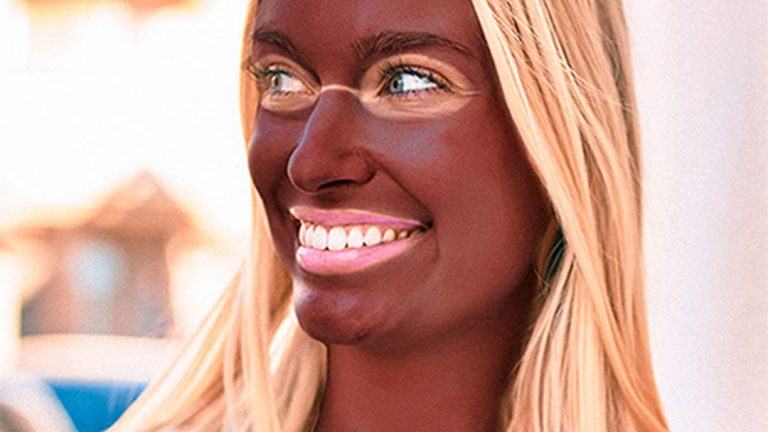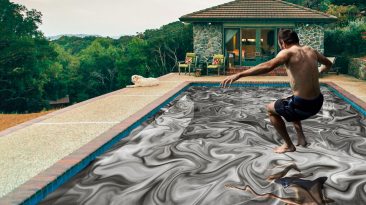You’d love to have that healthy, sun-kissed tan all year round. But too much sun and you could get a nasty sunburn or even skin cancer. Spray tanning sounds like a way better idea. Why not just get spray-tanned every day? How safe would that be? What would you look like after spray tanning non-stop? How would life change for you?
Many doctors have been encouraging people to try spray tanning as a safer alternative. But it barely lasts two weeks. So could you get that vacation look all year round if you spray tanned every day? Your skin gets its color from melanin. Larger amounts of melanin protect people living in warmer climates from getting sunburned too easily.
The key ingredient of a spray tan is Dihydroxyacetone, commonly known as DHA. It’s a simple sugar formed when glucose is broken down for energy. When you get a spray tan, DHA reacts with nitrogen-containing amino acids in your skin. This reaction produces melanoidin molecules, relatives of melanin. These molecules make your skin darker.
Or oranger, if you’re using a bad formulation of DHA. But this type of melanoidin doesn’t protect you from getting sunburned. Scientists have found that tanning agents can increase damage when your skin is exposed to Sun. So you’re going to need a good sunscreen. And here’s where it gets even trickier. Spray tanning uses aerosols. And that means that DHA could get into your lungs and be absorbed into your bloodstream. This can’t be safe, right?
Research has now shown that some cells are more likely to become cancerous when exposed to DHA. And because there is no safety data on all-over-spray tans, they’re not FDA approved. You are advised to avoid inhalation at all costs. And take steps to protect your eyes. At one time, DHA was thought to only affect your dead skin cells. But a report released by the FDA found 11% of it is absorbed into living cells and deeper skin layers.
With a daily dose of DHA, you’d be putting your genes at a much higher risk of damage and even cancer. But at least you’d wake up feeling great about yourself every day. Or would you? Think about this. It takes about eight hours for the standard spray tan to dry. That’s eight hours of holding back your tears and sweat and avoiding skin contact with any precious items of clothing, linen or furnishing. And, of course, staying away from showering and shampooing. Or you’d just mess up your tan.
Easy to pull off as a twice a month thing. But when you have to do it every single day for a whole year, you might be tempted to cut corners. Salon workers say if you get a spray tan without exfoliating to get rid of your fading tan, you will end up with the zebra look. You could also look a lot darker than you want to.
But if you exfoliate every day, you would scrub your skin clean of its natural oils and speed up aging. And how about those patches of unevenly fading tan in your underarms? You see, sweaty parts of your body would lose their tan a lot faster. And sweat you would once you see the bill at the end of the year. A spray tan can cost $18 to $100.
That works out to an average of $14,000 on spray tans a year. Add to that the cost of moisturizers, exfoliators, soaps and oh, a really good anti-aging cream. If the money starts to bite, you could always switch to cheaper products. But that would just magnify the side effects. And let’s just say, smelling like microwaved roses would be the least of your worries.
Sources
- “Spray Tans Are Not Completely Risk-Free”. Jaime R. Herndon, MS, MPH. 2022. verywellhealth.com.
- “Tanning: Fast Facts”. Sarah Siddons. 2010. health.howstuffworks.com.
- “Skin Cancer and Sunlight”. 2022. ccohs.ca.
- “This Is How A Fake Tan Works”. Sam Lemonick. 2017. forbes.com.
- “A Review Of Common Tanning Methods”. Garone, Michael, John Howard, and Jordan Fabrikant. 2015. The Journal Of Clinical And Aesthetic Dermatology 8 (2): 43. ncbi.nlm.nih.gov.


















